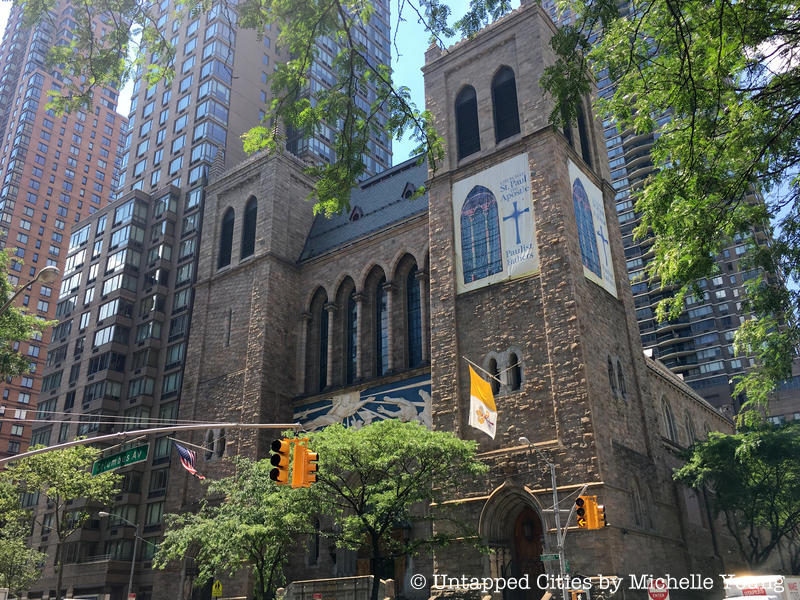7. Church of St. Paul the Apostle

Stones from both the Old Croton Aqueduct as well as the Murray Hill Distributing Reservoir were used in the construction of the Church of St. Paul the Apostle, on Columbus Avenue and 60th Street. Built in 1875 to 1885, this church was one of the tallest buildings on the Upper West Side as Upper Manhattan developed and can be seen in vintage photographs showing a landscape of farms.
The stones from the Croton Aqueduct came from “sections of an embankment of the Croton Aqueduct that was originally on the Upper West side and the Croton Distributing Reservoir at 42nd Street (now in New York Public Library, as shown above), as well as Booth’s Theater, which stood at Sixth Avenue and 23rd Street until 1883,” as written in the landmarks designation report for the church. The Upper West Side stones were taken from an abandoned portion of the aqueduct known as the “Clendenning Valley,” between 92nd and 113th Streets. It was written in the New York Tribune that relocating these stones saved the church $20,000 in construction costs.
For more NYC fun facts, check out our 10 of NYC’s Most Unique Manhole Covers and our 10 Unique and Quirky NYC Subway Entrances.





